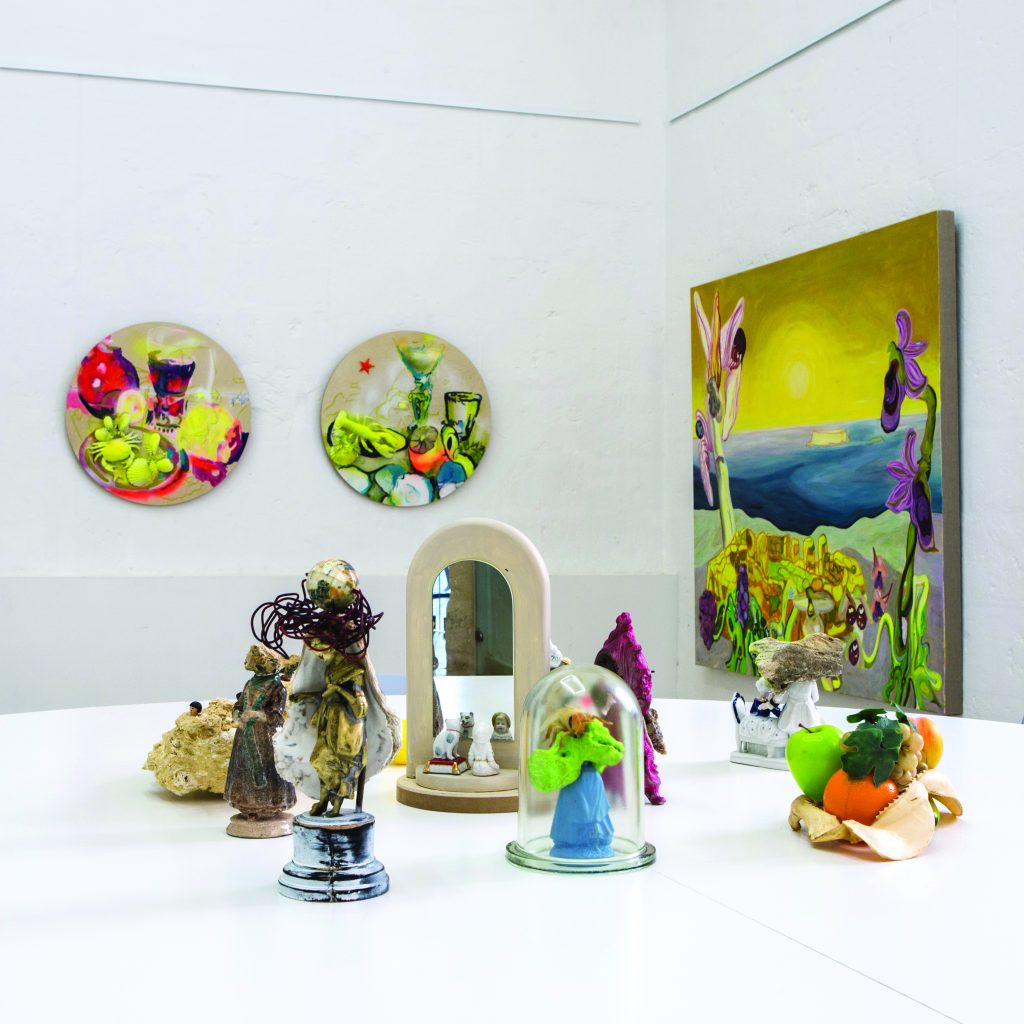Light is Time Thinking About Itself
Interview with Antje Liemann

The early stages of the global pandemic saw streets empty of people. As countries went into varying degrees of lockdowns – which aimed to mitigate the spread of the COVID-19 virus – people were forced to seek shelter indoors. While our mortality as a human race was brought to the forefront, a little spark of light emerged, as reports of nature returning to abandoned cities were shared. We witnessed a collective enthusiasm – even from audiences who typically neglect the environment.
German artist, Antje Liemann, took inspiration from the re-emergence of nature observed during the initial weeks of quarantine. Without humans, nature took hold. Her exhibition, on show at MUŻA, Light Is Time Thinking About Itself, curated by Margerita Pulé, creates an imagined world where humans cease to exist. She questions what nature would look like in our absence. The title of the exhibition is a quote drawn from the poem, Sight and Touch, by Mexican writer, Octavio Paz.
I met with Liemann in her Birgu studio, a communal space shared with other artists and creatives. It is here where Margerita and herself met, connecting over their shared interest in the environment. She settled in Malta three years ago – seeking a place in the sun – where she is now a full-time artist.
Her background is in economics, favouring a more traditional route to the start of her professional life. She tells me, “I worked in the field for 7 years”. Nevertheless, Liemann persevered with her artistic ambitions and attended evening classes to pursue her passion. She eventually decided to take a risk, describing how, “in 2002, I quit my job and decided to study art in Dresden”.
“Dresden,” explains Liemann, “is home of the Romantics”. It is here where Caspar David Friedrich captured her attention. He moved to the German city at the end of the 18th century and his work is still found in several museums. Friedrich is best known for his captivating views of natural landscapes. His work is united by the theme that humans have little control over nature. Liemann says, “he is painting light, nature and the relationship of humans with nature”.
Liemann’s exhibition pulls from the Romantic tradition and presents these concepts within a 21st century context. She firmly places the climate crisis at the forefront, imagining what could happen when human-impact is removed from the natural world. Our presence is only hinted at through ruins, such as Mnjadra, in her paintings. The ruin is overshadowed by larger-than-life orchids in the foreground of the painting, representing the dominance of nature over humankind. The work is complemented by a sound installation produced in collaboration with Letta Shtohryn, who recorded the prehistoric stones using a contact microphone.
Although the message of Liemann’s work is integral to the exhibition, she says that, “for me, painting is like making a sound”. When she is producing work, she forgets form, for a moment, and analyses how one colour communicates with another, saying, “the painting as a whole is like an orchestra”.
Found objects displayed on a central table, recalling the concept of a wunderkammer create contrast between nature and the human-made. Collected from various flea markets, she explains, revolve around how she “started to think about time, and started to collect clocks”. The clocks highlight the little time that humans have occupied the earth. Liemann points out that if you were to look at the earth on a 24-hour clock, humans have only existed for a few seconds. A mere blip in the universe, but our impact is irreversible.
Liemann underscores that, “We now see ourselves as the centre of the earth, but we are not”. She adds, “we are part of an ecosystem that works together. Without plants we cannot survive. We cannot eat, we cannot breathe”.
Liemann’s work is firmly based in research. Zoom interviews with locals who have an interest in the environment will be played on loop in the background of the exhibition. The digital format of communication has become synonymous with the current pandemic era.
Ultimately, she hopes that her exhibition will serve as ‘a wakeup call’, to care for our earth and our livelihoods. While her world is imagined, she believes, that in the distant future humans will most certainly disappear. But Liemann worries that “if we are not aware of what is happening, then it will accelerate the process”.
The exhibition will run from 13 August until 5 September 2021 at the Community Space, MUŻA – The Malta National Community Art Museum in Valletta. A series of workshops will be held to engage with the public and continue the conversation about what a world without humans could look like. The exhibition is supported by Arts Council Malta’s Project Support Grant, and the Embassy of German in Malta.











